Civic Theater
Part 2
November 2004. I’m sitting in the lobby of the Oregon State Capitol waiting to see a senior Republican in the state senate, Ben Westlund. He saw my company’s original production Witness Our Schools, a show about public education we were touring around the state with an attached town hall workshop/post-show dialogue, and he wants to talk with me about it. He comes striding down the long hallway, sees me, grabs my hand, shakes it and says, “That show is the best damn articulation of what’s wrong with public ed in this state that I’ve ever seen, and I’m gonna go out on the floor today and say that—I’m gonna tell every one of my esteemed colleagues they better go see it in their home district or they’re not gonna know what the rest of us are talking about around here.” And he’s gone. That fall, I’d already been making work I now think of as civic theater for a dozen years. But that moment with Senator Westlund—that moment felt important to me.
I wrote in my first HowlRound essay—
The practice of democracy demands building coalitions, articulating core values, examining sticking places and shared values in multi-ideological dialogues, listening, synthesizing and seeking common ground on the path to potentially shared legislative agendas. This practice is the collaborative, imaginative making of meaning. This practice is in desperate need of dramaturgy.
Theater artists have the tools to respond to that need. Not alone, and not to every aspect of democracy’s current dysfunction, but we are adept at the making of meaning through collaborative action.
I believe that in contemporary culture, there is growing interest in collective generative activity and exploration of nonhierarchical practices, particularly among young people. I believe that in public spheres, there is growing interest in moving beyond polarities and partisanship—there is a desire for collaboration. I believe that technology is facilitating this impulse, which can be seen in the cross-sector and cross-disciplinary momentum towards open source methodologies and coauthorship. This momentum, alongside today’s socio-political-economic challenges, has resulted in a desire for bridge building. But the systems and mediums through which we govern ourselves trail far behind these general societal impulses. It doesn’t have to be that way. Through acts of imagination and expressive action, civic theater builds bridges. It synthesizes complex issues and ideas, it builds relationships, and it leverages the specific people in a room as assets in shared, creative problem-solving.
My own experiences with collaboration tell me that for collaboration to succeed, all parties need to listen, and they need to make offerings; they need to make choices and be responsible for those choices; they need to articulate a strong personal vision while respecting and negotiating a space filled with multiple visions. My own experiences also show me that the act of collaboration as I describe it here could be taking place in a rehearsal room or a city council chamber. We (think we) know which place expects one kind of activity and which place another. But what if it wasn’t so cut-and-dried? What if the practice of one began to bleed into the systems of the other?
Why?
I make theater because I believe that in performance, anything is possible. I teach theater because I believe imagination and collaboration are the building blocks of possibility. I pursue possibility in my work because I believe that our well-being as individuals and communities is dependent on visions of what can be. I make civic theater because I am passionately interested in what can be.
Through acts of imagination and expressive action, civic theater builds bridges. It synthesizes complex issues and ideas, it builds relationships, and it leverages the specific people in a room as assets in shared, creative problem-solving
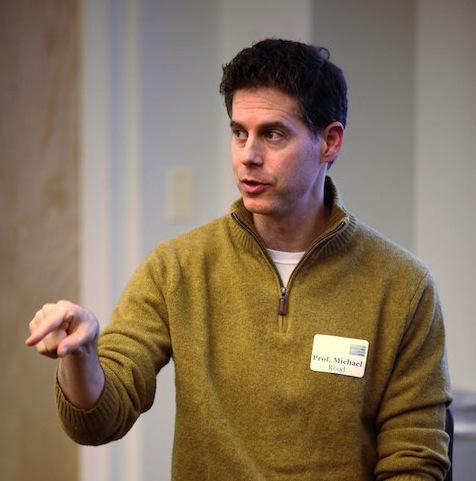
Performance and Public Practice
In 1992, while teaching a theater workshop in Washington, DC, with men and women who were homeless and living with HIV and/or AIDS, I discovered that nowhere in Washington were young people given space to have conversations about HIV, which was statistically the single greatest threat to their lives in that place and moment. So alongside the men and women I was collaborating with, I built a session out of theater activities, and performance to engage DC education and legislative leaders in dialogue about the bureaucracy of health education policy in the District. After successfully advocating for changing DC’s restrictions on classroom dialogue, we used these same techniques to engage young people all over the metro area in problem-solving and skill-building sessions focused on health, sexuality, and peer culture.
This moment of using theater process to engage with people in power and successfully impact local policy was the first time I saw my life as an artist and my passion for civic practice truly come together. I spent the next seven years travelling the United States as an artist in residence helping communities design, implement, and sustain theater-based ensembles that could host local arts-based civic dialogue on challenging issues.
In New Orleans (1994), I helped Planned Parenthood work in the Lower Ninth Ward with high school students on a program to combat teen pregnancy and gang-related violence. In Tacoma, Washington (1995), I helped City Government create a program that reimagined street outreach to young people struggling with rising HIV transmission through shared needles as public performance and one-to-one intervention. In Takilma, Oregon (1996), I worked with County agencies to help host community gatherings that brought timber industry representatives, loggers, and environmentalists together in public conversation. During these years, I led projects in urban, suburban, and rural settings. I taught within high schools, universities, and gatherings of professional artists. I built performance with people who had made lives in the theater and with individuals who considered acts of creative expression completely foreign to their way of life. I experienced theater as a connective public activity; as a collective interrogation of complicated civic issues; as a remedy for our growing impulse and capacity to spend time only with those like ourselves; and, as a battleground for critical thinking and empathy. I spent years learning about systems: how organizational, institutional, and place-based systems function, and how I could use artistic practice as a collaborator, when invited, to interrupt them, reimagine them, and at times, rebuild them.
To help aim the conversation at what I believe distinguishes civic theater from some allied bodies of work, I offer this: community-based theater practice has a long and powerful history of making performance (often place-based performance) with, by, and for individuals who do not self-define as artists, but who work alongside practicing artists and, within diverse contexts and with a myriad of intents, bring less frequently heard narratives and perspectives into the public arena.
Production as Connection
When I entered our field, I believed that sharing space and story in a darkened room with strangers was a community-building activity; that my role as an artist was to find stories that needed telling, make dynamic context for the telling, and tell them well. By the time I founded Sojourn Theatre (alongside seven founding ensemble members) in 1999, I was questioning that belief. And now, I have come to believe that my role as an artist is actually to make experiences during which strangers connect with each other. Our lives are filled with opportunities to watch and listen to narrative surrounded by people we don’t know and never will. I am interested in work that builds the possibility of connection. Sojourn has been my journey to that discovery, and my lab (with my Sojourn collaborators including Shannon Scrofano, also working with me on the Center for Performance, Public Practice and Civic Innovation) to devise those experiences.
It’s also been my opportunity to discover the potency of theatrical activity in projects that engage diverse public sector partners in purposeful, sustained actions of public dialogue. Between 2000 and 2002, Sojourn Theatre worked in Allen County, Ohio, on the project Passing Glances. We became a significant part of the county’s effort to engage urban, rural, and suburban populations around civic issues related to race, class, and leadership. We built relationships over time, and we returned in 2004 for residencies in the public schools; in 2007, we were called in as artist-responders when a police shooting became a civil rights crisis.
In 2006, the Office of The Mayor of Portland asked Sojourn Theatre to create a theater and dialogue project to aid the city's Vision Project. We created a show and post-show event called One Day that blended narrative with question-and-answer style sessions placing fictional Portlanders and real Portlanders in contexts of problem-solving together. The Mayor's staff transcribed it all, and the City’s Vision committee read every proposal. In Sojourn’s BUILT (2008), audience members worked alongside City Planners and collaboratively imagined what a city can look like in a show we subtitled: “A participatory civic planning game with performance interruptions”. And On The Table (2010) explored contemporary United States urban/rural tensions and conversations by transporting one hundred people a night, from two communities fifty miles apart, across Oregon towards each other in school buses to be part of a show, a civic dialogue, and to share a meal.
Sojourn Theatre’s current project, Town Hall (which I am co-leading and co-directing with Rachel Chavkin of The TEAM, our Town Hall collaborators, and which opens at Kansas City Rep in their 2012-2013 season), includes a national engagement initiative called “Town Hall Nation” Schools, theaters, and community organizations are signing on to create locally devised versions of imagined, idealized town hall events where democracy functions and civic discourse works—visions of how we want to govern and be governed, made and shared by diverse Americans, all to be documented online. It hopes to live as a model of what the Center for Performance, Public Practice and Civic Innovation can be—a lab and a hub that demonstrates and disseminates the intersections of research, practice, and service.
To help aim the conversation at what I believe distinguishes civic theater from some allied bodies of work, I offer this: community-based theater practice has a long and powerful history of making performance (often place-based performance) with, by, and for individuals who do not self-define as artists, but who work alongside practicing artists and, within diverse contexts and with a myriad of intents, bring less frequently heard narratives and perspectives into the public arena. Participatory democracy practice involves engagement strategies that utilize the participation of constituents in the direction and operation of political systems. Civic theater attempts to utilize artistic practice, not just to tell stories that catalyze civic dialogue, but as assets of meaning-making and collaboration that artists can and do bring to public process. I founded the Center to make a space for the community of artists who share this specific passion, and to build bridges between artists and public process; to help artists develop and articulate these assets as possibilities, and to help leaders see the potential in this type of cross-sector work. Senator Westlund’s walk down that hallway and his outstretched hand serve to me as a reminder—it does not represent all the possibilities of civic theater in terms of process, product, and partnership. But I believe in that moment, he was expressing appreciation for a play, an event, and a contextualization that our company of artists had devised and which brought his desire for meaningful public discourse to his home community and to his peers at the capitol. We used tools we possess to meet a particular need of his, and just as importantly, a particular need of a functioning democracy—spaces for dynamic, imaginative, respectful, and collaborative civic discourse.
Coming In December: Part 3
The work of the Center—Projects and Advocacy

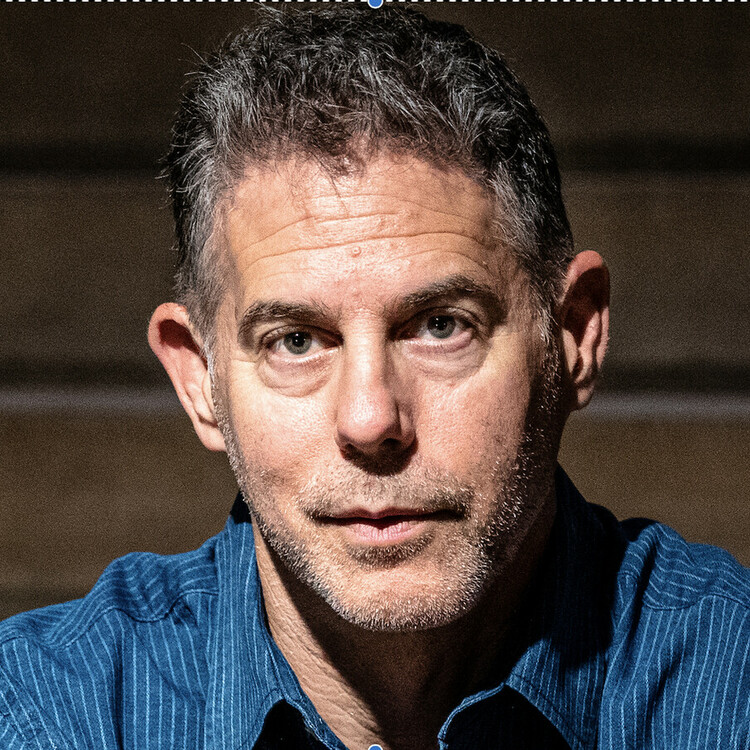
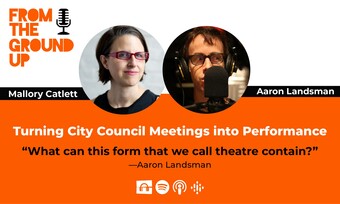



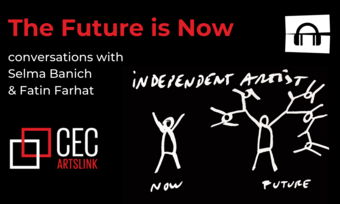

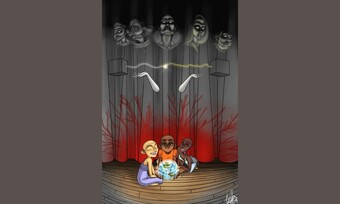


Comments
The article is just the start of the conversation—we want to know what you think about this subject, too! HowlRound is a space for knowledge-sharing, and we welcome spirited, thoughtful, and on-topic dialogue. Find our full comments policy here
I now have a sense of what you have been doing in this work.